Introduction of Yarn Spinning
2012-03-09
Introduction of Yarn Spinning
Yarn spinning is a process of making or converting fiber materials into yarns.[1] Since few centuries ago, spinning have been known as a process of converting raw materials(fiber) such as cotton and wool into yarns for making textile fabric or products. There are two classes of spinning process have been developed by people, Hand Spinning and Machine Spinning. In Textile Industry, the size of yarns is determined by unit of Tex, Count, Worsted, Woolen, and Denier.
Hand Spinning
Before industrial revolution occurs, hand spinning method is widely used by people for making yarns. The principle is by using a tool such called carder or bare hand to align parallel the yarns before twisting.
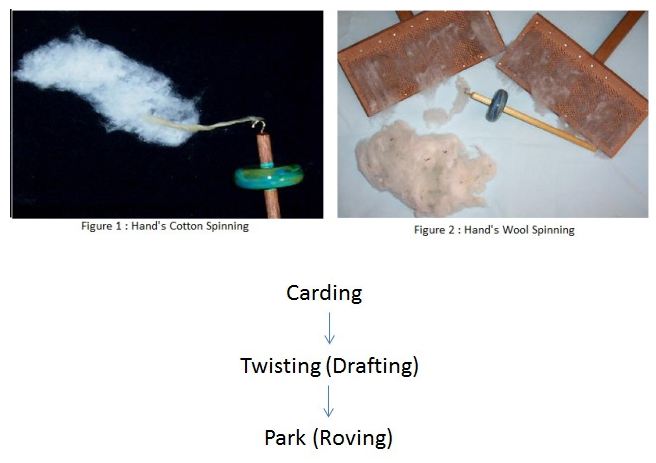
Carding
A tool such as wool card will be used to remove impurities on the surface and reduce clump to ensure the evenly spun during twisting process. Otherwise it may be done by bare hand.
Twisting
The end of wool fiber will be tied with the hook of the spindle, twist spindle in clockwise direction, if the twist too loose it may break the yarn during process.
Park
The yarn will be wrapped at the below section of the spindle
Machine Spinning
After industrial revolution, many developments have been done by the industry to ease the process by apply machine to control the process effectively. One of the oldest types of machine used by the industry since nowadays is Ring Spinning Machine.
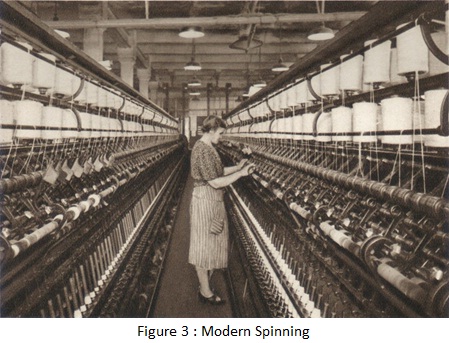
Types of Yarn Production
There are two classifications of yarns that will be produced by spinning which are Filament and Staple yarns.
Filament
These yarns are made from long, and continuous strands of fiber. Most of them from synthetic and only silk represents for natural fibers in filament.
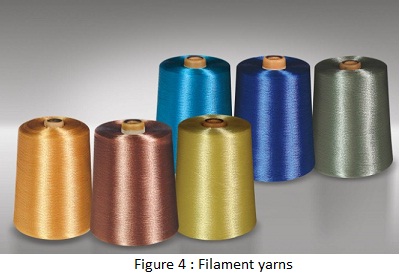
Staple
Staple or spun yarns in other hand are made from short length of fibers. It can be found from natural fibers or can be produced using synthetic as staple filament yarns. As it is short length, staple fibers need to be held together with others in order to get the long and continuous yarns.
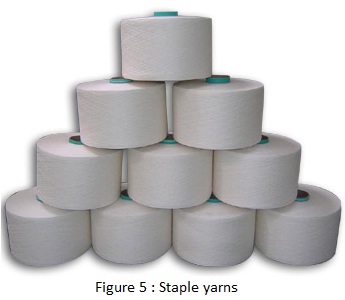
Steps in Making Fibers into Yarns
For making yarns, there are few stages or process need to be done. Each staple and filaments have different stages and system for the production process.
Filaments
Several common system used by the manufacturer in spinning industry for Filament yarns;
- Wet Spinning,
- Dry Spinning,
- Melt Spinning,
- Bicomponent Spinning,
- Biconstituent Spinning
Filament yarns spinning is simplest and least stages require compare with Staple yarns spinning. The molten polymer of synthetic will be inserts into a vessel, after few colorations have been done, the solution will be pushed out through the spinnerets to become filament yarns.
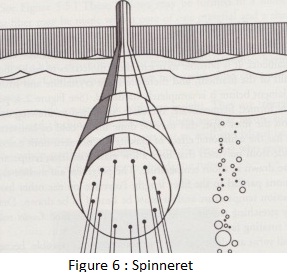
Staple
This process is much complicated and requires several stages need to be done before Staple yarns can be produced. In terms of cost production, it is much higher compare with Filament yarns and this means a lot of energy consumption will be waste during this process.
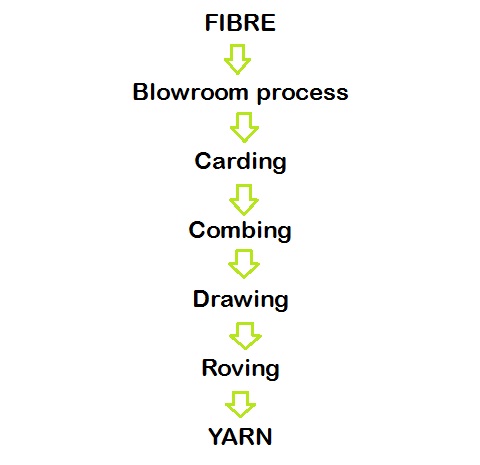
Several common systems used by the manufacturer in spinning industry for Staple yarns;
- Conventional Ring Spinning,
- Air-jet Spinning,
- Open-end or Rotor Spinning,
- Vortex Spinning
Blowroom
A process where the raw materials packed in bale forms(supplier) will be open and clean the impurities on the surface by using bale opener machine.

Carding
It’s the heart of spinning process. This is where the flock from bales will be open into individual fiber. Thus, it will ease to remove the excess impurities on the fiber surface. At this point, short fiber which not suitable for production in terms of length requirements will be eliminated.
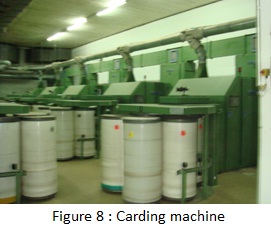
Combing
This is a process where the yarn will be straightened again so that they are arranged in parallel manner. While at the same time, the remaining of short fiber will be eliminated completely from the longer staple fiber. By doing this, long-staple will produce stronger and smoother fabric which are highly demanded in the market.
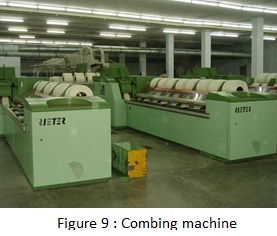
Drawing
At this stage, it will be pulled the sliver lengthwise direction over each other. Thus, it will cause it to be stronger and thinner in production which is very important in evenness of the yarn. If there is any faults occur during process, it will still pass into the yarn. Most of manufacturer will use blending process where two or more different types of fibers will be blended to form a yarn. Common type of blend use is Cotton/Polyester combination, by doing this it will not only reduce the cost but also increase the performance.
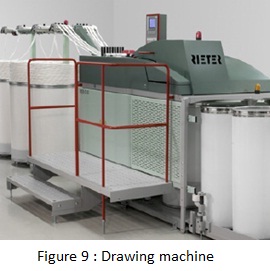
Roving
This is the final stage where the preparatory steps for insertion of the twist. Enough twist is given to hold the fibers together but still has no tensile strength. The roving in bobbins is placed in spinning frame where it passes several sets of roller which running at high-speed to convert into yarn forms.

General Comparison between Filament and Staple Yarns Performance

Tenacity & Elongation
As stated above in the table, Filament yarns have excellence properties compare with Staple yarns. But still, in terms of real production each of these yarns has their own high demands usage. Although Staple yarns seams have weakness in tenacity, overcoming can be done by increasing twist on the yarns and by blends it with synthetic fibers.
Comfort
In terms of fabric production, Staple yarns contribute high comfort by providing good absorbent and heat trapped. It is really important for country which has high moisture environments. Filaments on the other hand, seem fit for cold weather because of lack in terms of absorbent and heat trapped.
Conclusion
Both filament and staple yarns have their own advantages/disadvantages. Each of them is produced base on their end-use products such as fabrics, rope, and fishing yarns. Filament which majorly based on synthetic and some from natural sources, because it can be produced base on the needs in terms of its length(continuous or staple) and properties such as pre-choose coloration, alteration in physical and chemical structure have made it some advantages in production.
While for staple yarns, although it seems loss due to the length, staple still got some advantages in terms of strength which will make the yarns more stronger when the content of absorbency is higher, thus will make it suitable use for machine treatment(washing machine). Meanwhile, common technique used by the manufacturer to reduce the cost production of staple is by combining staple(cotton) with filament(polyester), at the same time it didn’t only reduce cost but also will overcome few weakness of staple yarns. Some of the new advancement have been made by researchers are like Spinning Nano Yarns(University of Texsas) [5], Air Jet Spinning and High Speed spinning machine.





 successfully added your inquiry
successfully added your inquiry